A Simple Technique to Photograph Standing Waves on Water
![]()
By using a simple mechanical oscillator attached to a plastic cup, a number of unique standing wave patterns can be created. The resulting photographs are similar to geometric mandala patterns and thus are popular subjects for photography students.
Jenny developed a theory of pseudoscience linking the patterns to a mythical energy field. In reality, the patterns have long been understood by physicists who can describe the patterns with a mathematical formula that is dependent on the fluid viscosity, mass of the fluid, speed of sound in the fluid, size and shape of the container, and frequency of the vibration.
All the physics aside, the patterns are easy to photograph with a simple setup and are quite beautiful.
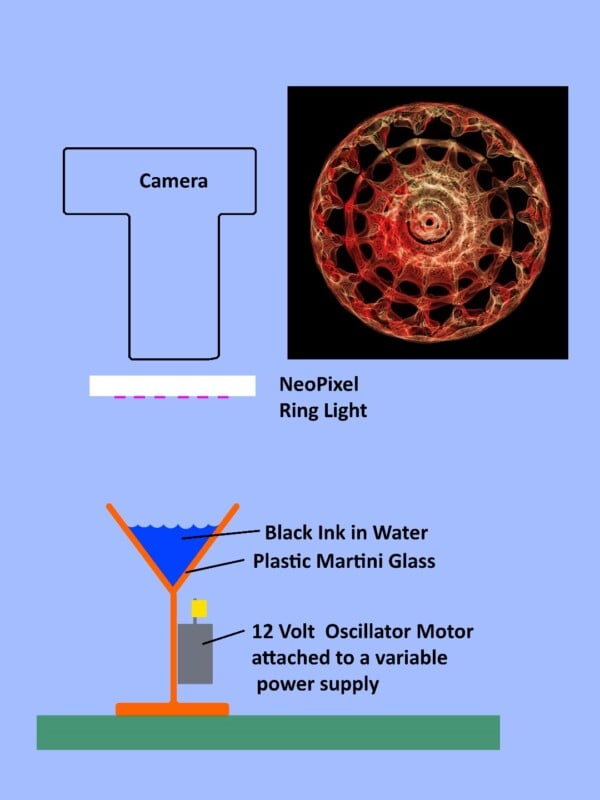
To create these patterns, I use several different photographic setups. The simplest setup uses a surplus mechanical oscillator that runs from 2 volts to over 12 volts. The motor shaft has an off-axis mass on it that causes the motor to vibrate, a process similar to an unbalanced wheel on a car.
I bought several mechanical oscillating motors for a few dollars each from an electronic surplus company called All Electronics, but you can also fasten a bolt to any electrical motor to get the same effect. Many different sizes of oscillators can be purchased surplus, ranging from cell phones to pagers, to motors for vibrating plastic casting. Some of the small cell phone oscillators work quite well with lightweight dishes made from aluminum foil.
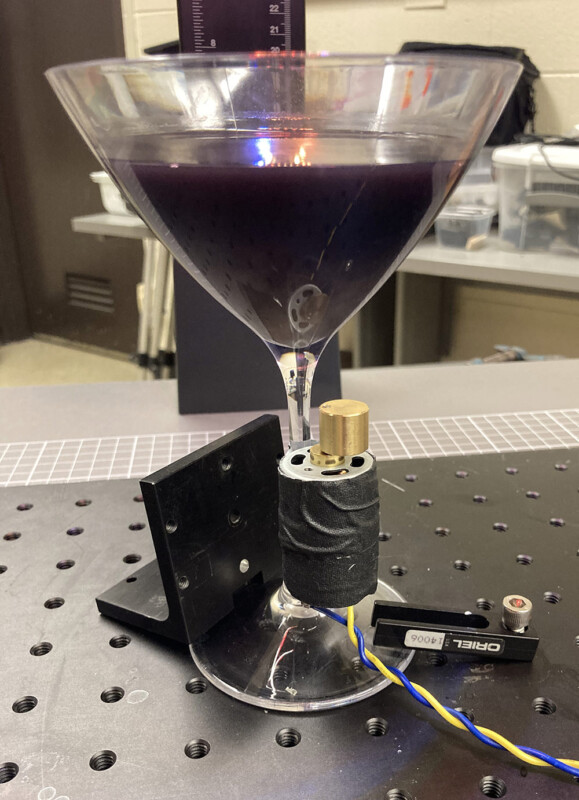
In the simplest setup, the motor is taped to the stem of a plastic martini glass. Champagne, wine, or any plastic glass will work. I am mainly interested in plastic that will take a lot of vibration without breaking and have different diameters. The smaller the mass of water the container holds, the easier it is to vibrate. Many different patterns can be achieved by using everything from bottle caps to soup dishes.
To get good reflections off the surface of the water in the plastic glass, a few drops of India ink are added to the water to absorb any light that enters the water. Only about 5% of the light that hits the vibrating surface is reflected, so the brighter the lights used for illumination, the better.
My light source of choice is a 24 LED Neopixel ring light sold by Adafruit.com. This light can be driven by some simple code on an Arduino that takes three leads: power (5Volts), ground, and a control pin. I connect the control pin to a simple switch so I can turn the control pin off when I get a lighting color I like (the control line to the light is only used to update the color pattern). The ring light can be programmed to make any color or have a slow-moving rainbow.
Once the power supply is attached to the oscillation motor, the change in voltage will create a change in the frequency of the vibrations. Each dish has its own resonant frequency dependent on the size of the dish, the depth of the water, and the frequency of the oscillator. There are a lot of factors to experiment with. The oscillating motor can easily create frequencies up to several hundred hertz (Hz).
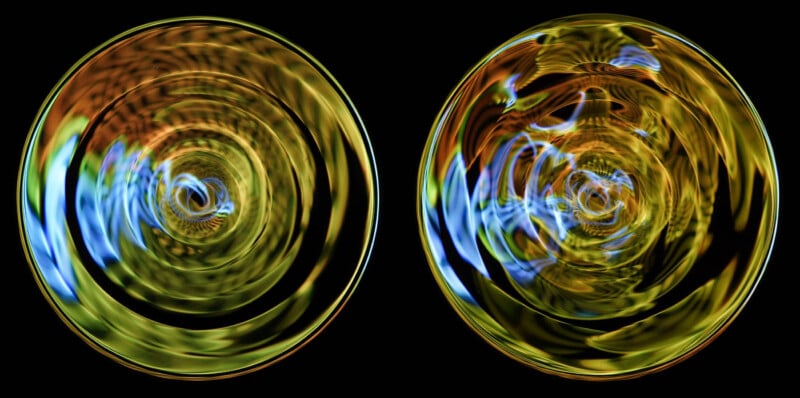
The exposure is one of the most interesting variables to change. By increasing the exposure time, several oscillations can be added together. A triangle vibration pattern becomes a 6-pointed pattern by doubling the exposure. Double the exposure again and get a 12-sided shape. Not only does experimentation lead to different patterns, but the results can be quite beautiful.
Besides changing the exposure, the size and shape of the container can also be changed. Triangular-shaped dishes can be folded out of aluminum foil. There are a huge number of changes that can be made. Experiment and have fun!
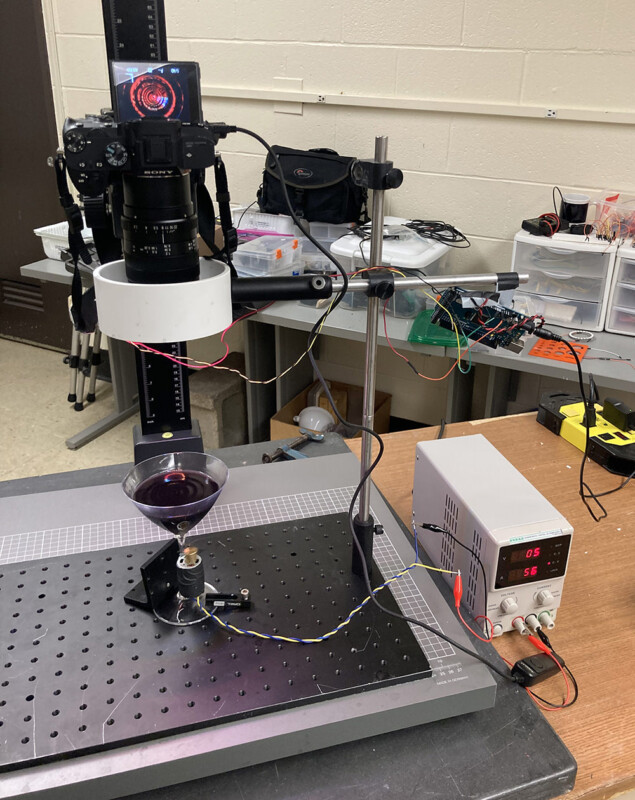
I have made a little video showing the process here:
If the oscillation plastic glass is replaced by a speaker under the dish and a sine wave generator is used to drive the speaker, different vibrations can be observed.
Samples of these patterns can be found below.
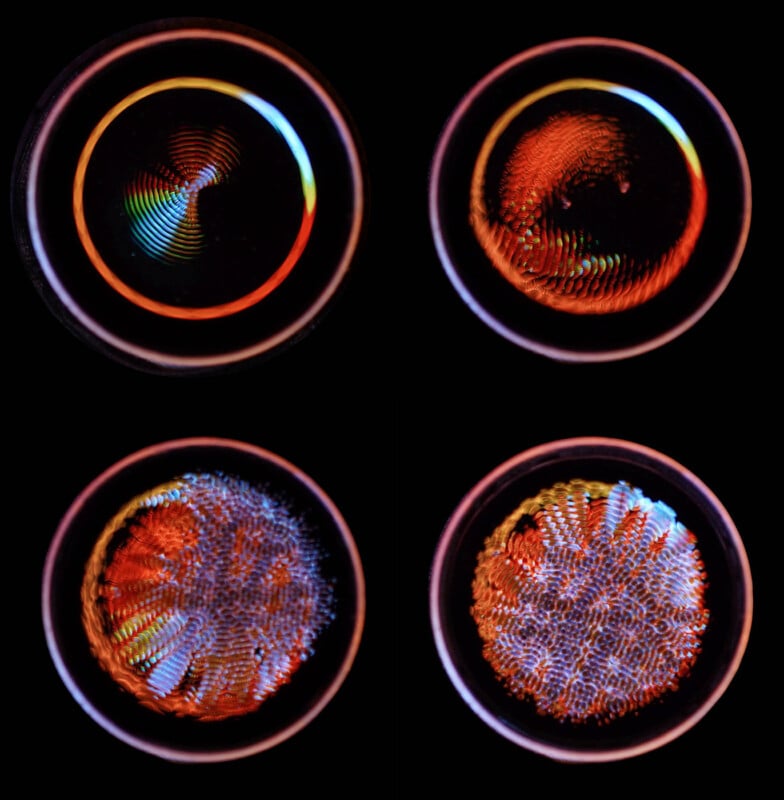
About the author: Ted Kinsman is a Professor of Photographic Sciences at the Rochester Institute of Technology (RIT) where he teaches technical imaging. He has contributed to numerous articles, books, and movies, including South Park, SpongeBob SquarePants, and the Planet Earth Series. In 2019, he was the recipient of The Louis Schmidt Award for lifetime achievement in science imaging from the Bio-Communications Association (BCA). He is the author of Cannabis: Marijuana under the Microscope. His most recent book is Sparks! Sparks! Sparks! The Beauty of Captured Lightning: Documenting Lichtenberg Figures of Electricity with Film and Digital Photography. His current research focuses on Reflectance Transformation Imaging (RTI) and Light Sheet Microscopy.